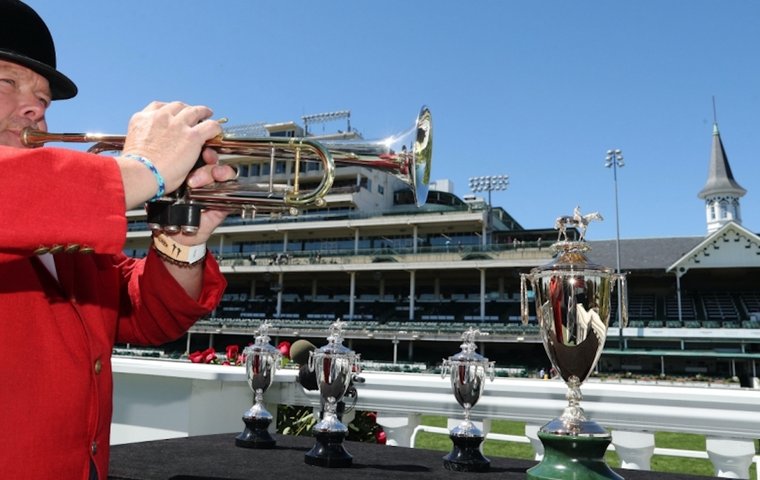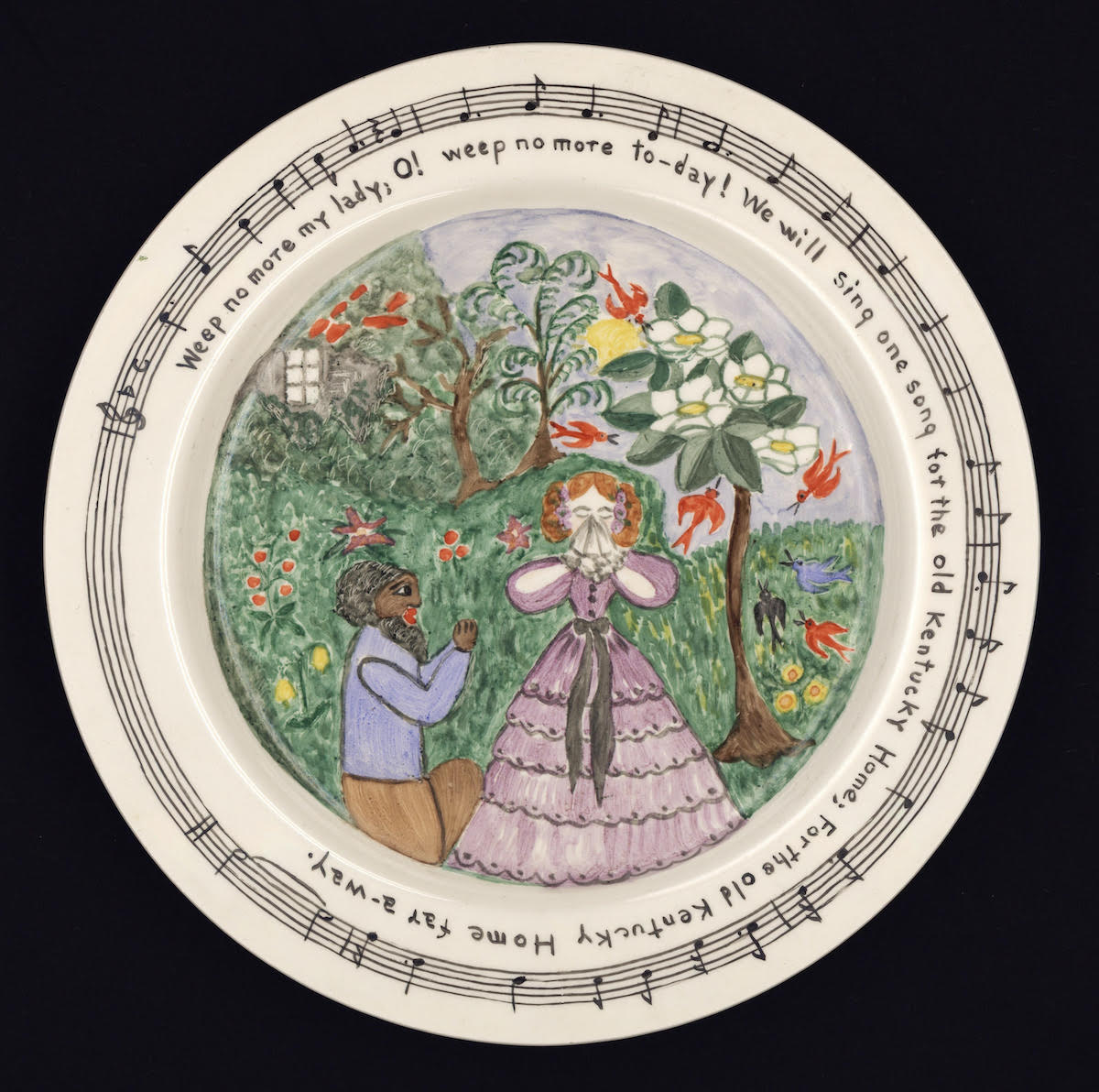
Emily Bingham, author of a revelatory account examining the origins of the Kentucky Derby anthem, speaks to Teresa Genaro
In September 2020, Churchill Downs found itself at the nexus of sport, social justice, and protests against police brutality. Earlier that year, Louisville resident Breonna Taylor had been killed in her home by police officers, and following the murder of George Floyd by police in Minneapolis and other acts of police brutality, protests had taken place across the United States throughout the summer.
As a result of the COVID pandemic that had shut down racing that spring, the 2020 Kentucky Derby was scheduled to be run on the first Saturday in September instead of on the first Saturday in May. Churchill Downs faced a degree of criticism for h olding the Derby at all at a time of such unrest, and particularly for its tradition of playing ‘My Old Kentucky Home’ as the horses came onto the racetrack for the post parade.
olding the Derby at all at a time of such unrest, and particularly for its tradition of playing ‘My Old Kentucky Home’ as the horses came onto the racetrack for the post parade.
By that point, historian Emily Bingham was already deep into her research on the history of the sentimental ballad written by Stephen Foster, a white man, in the 1850s and often performed by white people in blackface.
‘My Old Kentucky Home’ was adopted as the official state song of Kentucky in 1928, and an entire industry, often based on falsehoods about the song’s origins, sprang up as post-Civil War Kentucky reinvented itself through marketing campaigns as a bastion of genteel Southern traditions.
Read the Washington Post review
As Bingham points out in My Old Kentucky Home: The Astonishing Life and Reckoning of an Iconic American Song, published this week by Knopf, those campaigns were created by and for white people seeking to reframe slavery in Kentucky as less brutal, more kind than in other states.
Bingham grew up in Louisville and still lives there; she holds a BA from Harvard and doctorate in history from the University of North Carolina-Chapel Hill.
A Visiting Honors Fellow at Bellarmine University in Louisville, she teaches a course on the history, culture, and economy of the Kentucky Derby. As both a child and a young adult, she participated in Derby festivities and sang the song, at times moved to tears by the sentimental images of enslaved people returning home to the plantation to die after having been sold away from their families.
The enslaved narrator in the song recalls of the “delight” of life on the plantation, looking forward to returning to the old Kentucky home where “all trouble will end / In the field where sugarcanes grow”.
Often presented as an anti-slavery song, the ballad began to discomfit Bingham, and she began researching its origins and evolution. “About 10 years ago, I gave a talk about the song to a small group of people,” said Bingham by phone recently. “Two people stood up and said, ‘I will never sing that song again.’
“There were two African-American people there, and they looked around at the non-Black people and said, ‘You guys never knew this?’”
Bingham calls the song a “sonic monument” to the myth of the Old South and the Lost Cause, akin to the statues of Confederate figures created during the Jim Crow era in the US, long after the end of the Civil War.
“White people can walk by those statues a nd think they’re perfectly fine, while those monuments are quite painful for other groups,” added Bingham.
nd think they’re perfectly fine, while those monuments are quite painful for other groups,” added Bingham.
Stephen Foster, it emerges, came from a family of Pittsburgh Confederate defenders; Churchill Downs has a prestigious stakes race named in honor of the composer.
However, the man most closely associated with bringing the Kentucky Derby to national prominence was Matt Winn, who led the Louisville track in the early part of the 20th century.
Responsible for the race’s singular profile in US sport, he was also responsible for bringing ‘My Old Kentucky Home’ to the event on the first Saturday in May. “For Winn and white racegoers entrenched in a Jim Crow culture and legal system that subordinated people with darker skin in countless ways, a one-time blackface minstrel song was more unifying, more satisfying, more memorable, and just as patriotic” as ‘The Star-Spangled Banner’, writes Bingham. “The song completed a sensory adventure into a benign South where visitors could touch down and be served by smiling Black waiters and soothed by Foster’s ode to days on the old plantation.”
Bingham explained: “This song has given joy to a lot of people, and it’s given pain to a lot of people – and it’s filled the pockets of white people for 170 years.”
Bingham also challenges the assertion that the song conveys abolitionist sympathies, even as its first two verses may well elicit sympathy from white people towards enslaved people.
There is no historical indication that Foster held abolitionist beliefs, and, asserts Bingham, “No abolitionist would ever support the arc of the whole song, of an enslaved man wishing himself onto the plantation in Kentucky.”
Defenders of the song often point to the 1968 removal of the offensive word “darkie” from the song’s official lyrics, replacing it with “people” – a decision that, according to Bingham, solved one problem by creating another by erasing the experience of enslaved people. “The change ‘fixed’ the song without reckoning with it,” she said.
In 2020, the Kentucky Derby was run without customers to prevent the spread of Covid-19. Churchill Downs released a statement acknowledging that “inequality exists” and pledging to be inclusive and “do more”, promising that Derby Day 2020 would be “unlike any other. As it should be”.
The statement didn’t mention ‘My Old Kentucky Home’ and the song was played as usual, albeit without 150,000 voices singing along. And in 2021 – and presumably in 2022 – it was back to business as usual.
“The song helped rebrand Kentucky at the turn of the last century, and we’ve had a full century of that rebranding,” said Bingham. “We don’t have to keep that brand. It’s a choice.”
She went on: “In Germany, you don’t see soccer stadiums full of people singing songs about the Holocaust. In South Africa, you don’t see people at cricket matches singing about apartheid. How has this country, this culture arrived at a point that we are singing a song that’s rooted in the slave trade?”
 My Old Kentucky Home: The Astonishing Life and Reckoning of an Iconic American Song by Emily Bingham is published by Knopf. Order here
My Old Kentucky Home: The Astonishing Life and Reckoning of an Iconic American Song by Emily Bingham is published by Knopf. Order here
• Visit Emily Bingham’s website
Kentucky Derby: White Abarrio puts Saffie Joseph on the Triple Crown trail – for the second time
From the UAE to the USA: why Bhupat Seemar is dreaming of the first Saturday in May
View the latest TRC Global Rankings for horses / jockeys / trainers / sires


